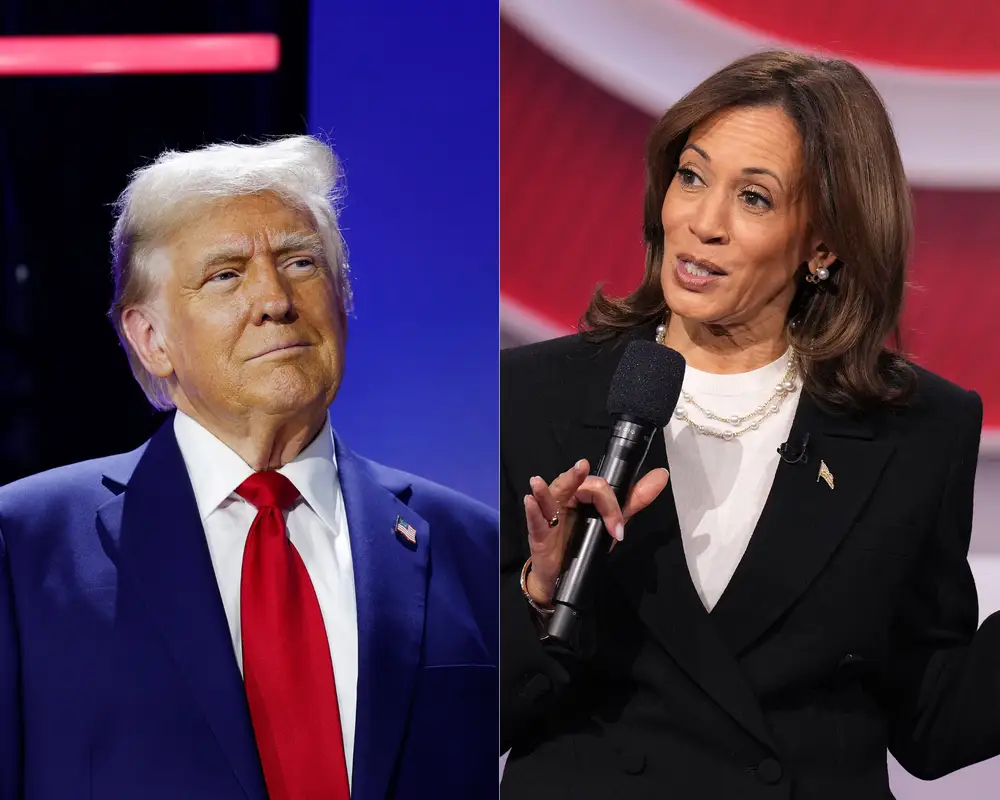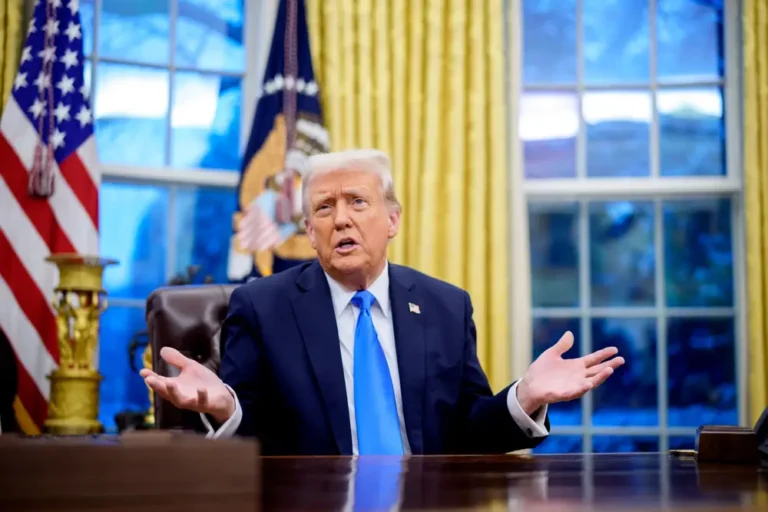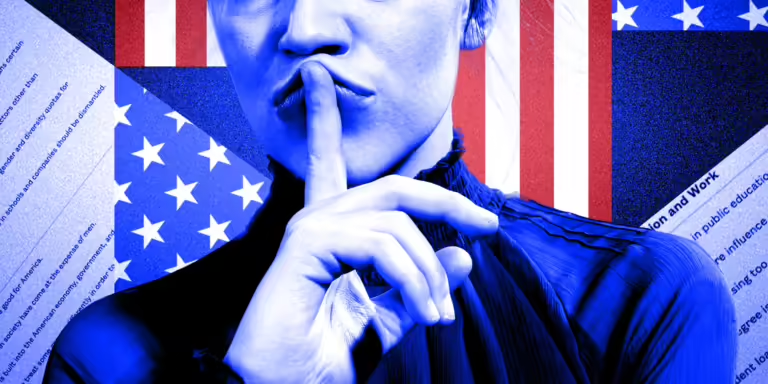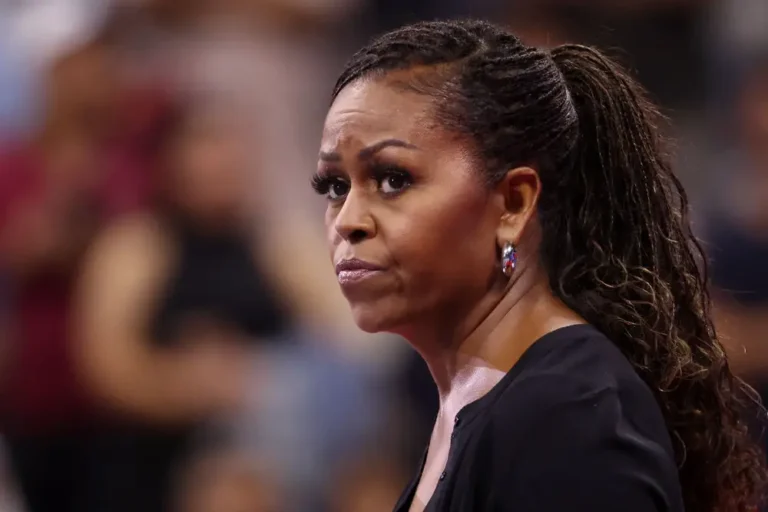How a Trump or Harris presidency could impact the future of AI

Five experts weighed in on how we could expect a Trump or Harris administration to approach AI.
With Silicon Valley executives inserting themselves — and their wallets — into this year’s presidential election, questions remain about how Vice President Kamala Harris and former President Donald Trump would tackle AI regulation should they win the White House in less than one week.
B-17 spoke to five experts with experience in government and the private sector about how each administration might regulate AI, which is evolving at breakneck speed and influencing nearly every factor of American life.
“There should be more attention paid to what the candidates do in the AI area, just because it’s such an important space,” Darrell West, a senior fellow in the Center for Technology Innovation at the nonpartisan Brookings Institute, told B-17. “But neither Trump nor Harris have been very detailed in outlining their policies. Neither has put out major position papers on the topic, so it’s a little bit of a black box in terms of how each administration would handle AI.”
“It’s a shame that we’re a week away from an election and we don’t have a detailed AI policy agenda from either candidate,” John Bailey, a nonresident senior fellow at the conservative think tank the American Enterprise Institute, said
The experts anticipate that, broadly speaking, Trump will take a more deregulatory approach to technology and AI, whereas Harris will continue with the Biden administration’s approach of regulation. There remains room a degree of uncertainty with either candidate, though, as each juggles the desires of their private sector supporters.
The candidates differ over a recent key AI directive.
Between calling AI “very dangerous” and sharing AI-generated images of Taylor Swift, Trump hasn’t offered many details on how he’d regulate the technology. He has, however, committed to rolling back a sweeping executive order that President Joe Biden issued in October, 2023 regarding AI regulation.
The wide-reaching order generated significant political backlash, as some conservatives argued that certain provisions constituted government overreach and would hinder innovation. Supporters generally argue that regulation is necessary to ensure safety in the industry.
“The sticking point was really over the idea that we would create this big, monolithic AI regulation, not that we would create regulation at all, because there’s already regulation around AI in those regulated industries,” said Nicholas Reese, an adjunct professor at New York University and the Director of Emerging Technology at the Department of Homeland Security from 2019-2023.
“It was inclusive of certain perspectives and communities who helped shape it, but it did not reflect a lot of center-right thinking,” Bailey told B-17.
In late October of this year, the Biden administration published a national security memorandum telling the Pentagon and intelligence agencies to ramp up their use of AI. Earlier in the month, Biden’s team issued guidance over how federal agencies overall should effectively use AI while appropriately contending with risk.
Megan Shahi, Director of Technology Policy at the liberal think tank the Center for American Progress, called the executive order “a good first step.” Oren Etzioni, the founder of a nonprofit fighting political deepfakes and the former CEO of the Allen Institute on AI, thinks that the order is well-intentioned, but potentially too heavy-handed.
“I think that regulating a fast moving technology is challenging, and I would say that it’s well intentioned, but the road to regulatory hell is paved with good intentions,” Etzioni said.
Trump would take a more hands-off approach to AI — but his immigration policies could end up impacting the sector.
Trump has inscribed his promise to get rid of the order into the Republican party platform, which reads in part: “We will repeal Joe Biden’s dangerous Executive Order that hinders AI Innovation, and imposes Radical Leftwing ideas on the development of this technology.”
Other than that, Trump hasn’t offered many details on his plans for AI policy and his campaign did not respond to B-17 request for comment. Reese anticipates that he would repeal the new National Security Memorandum as well, but both he and Bailey said it’s unclear what he would replace it with. The uncertainty could, Reese said, cause confusion among innovators.
“I haven’t seen any other concrete policies on this, which tells me probably that they’re not going to put forth a comprehensive AI strategy,” said Shahi. She said that Trump hasn’t committed to much regulation in any direction, and Etzioni described him as “pro-deregulation.”
As president, Trump didn’t spend a lot of time talking about AI, but did sign his own executive order in 2019 that instructed federal agencies to prioritize researching the technology — Bailey described the order as “overlooked and under-appreciated.”
Reese worked at the Department of Homeland Security during the final year of the Trump administration.
“When I worked under the Trump administration, there was actually quite a bit of activity, they were very active,” he said. “And especially on AI, they were doing things that would be pretty hard to argue over, like creating a list of trustworthy principles for trustworthiness and AI.” He described that administration’s approach as “incremental.”
Etzioni said the former president’s impact on AI extended beyond narrow policy and that the same could go for another Trump term. In particular, he thinks that the immigration of skilled workers is crucial in the AI race against China, which Trump’s immigration policies threaten.
“The impact on business is nuanced, but I think that it’s trumped by the impact of the country,” Etzioni said. “If Trump ends up being the agent of chaos that many of us anticipate he will be, that’ll have the biggest impact on AI, more so than specific policies.”
Harris would build on Biden’s executive order and likely maintain his overall approach to the AI industry.
With her California roots and deep ties to the tech industry — her brother-in-law Tony West is an executive at Uber — Harris played a significant role in the Biden administration’s efforts on AI. She met with the leaders of tech companies, helped introduce memos on AI use in the federal government, and represented the administration at a global summit on AI safety, which she flags on her campaign website.
After Biden took office, Reese said that the work on AI policy eventually became more ambitious than it had been under Trump.
“It felt like the major difference was that the Biden administration tried to pursue bigger pieces of policy,” he told B-17.
When asked for comment, the Harris campaign directed B-17 to the vice president’s policy handbook, which specifies Harris’ intention to honor Biden’s executive order and includes plans for an “America Forward” strategy that focuses in part on strengthening AI technology. The policy book also outlines a plan to scale up the National AI Research Resource, which supports startups and researchers.
The experts that B-17 spoke to don’t know precisely what Harris would do as president. They all anticipate that she would take an approach generally consistent with Biden. Shahi said that Biden provided “a straightforward foundation to build on,” but doesn’t think that AI is necessarily a day one priority.
“I think that a Harris administration is likely going to take this kind of much more linear, much more predictable path that is based on a lot of the existing corpus of AI policies, like the National AI research resource,” Reese said, describing such continuity as the healthiest approach.
Whether Trump or Harris wins the White House, Etzioni and Bailey said that having AI experts in the administration is crucial. Among the few upsides Bailey sees to Biden’s executive order is the call to have agencies appoint AI directors.
“The bottom line is that neither of them is an AI expert, so it’s a question of who they would hire,” Etzioni said of the candidates.





